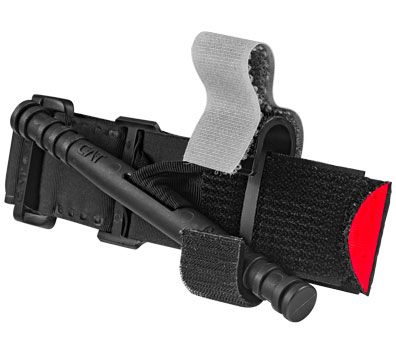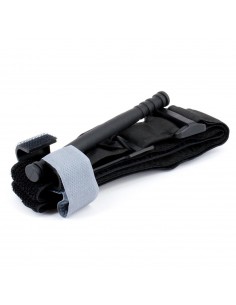WHEN AND HOW TO USE A TOURNIQUET
This article was inspired in part by the misuse of tourniquets in the Ukrainian war, which you can read more about here - NIH GOV
We hope this explains the dangers of using tourniquets incorrectly.
What is a tourniquet?

A tourniquet is a device that is wrapped tightly around a person's limb to prevent blood from entering it.
A tourniquet is used to control life-threatening bleeding in patients experiencing acute blood loss from a wound to the arm or leg.
When is a tourniquet used?
Tourniquets are used when there is rapid loss of blood or bleeding from a wound on an arm or leg. They should only be used in life-threatening situations, such as arterial or venous bleeding or a torn limb.
They are an alternative method of controlling blood loss if direct pressure is insufficient or if direct pressure is not possible, eg if the wound is inaccessible.
Tourniquets cannot be used for head, neck or torso injuries. They should also not be used if bleeding can be controlled by direct pressure, i.e. tamponing, wound dressing, etc.
What are the risks of using a tourniquet?
The use of a tourniquet can save a life, but it should only be used when absolutely necessary.
Tourniquets work by restricting the blood supply to the affected limb, which means that tissues in the limb, such as skin, muscle and nerve tissue, are deprived of oxygen. This can cause serious tissue damage and tissue death. Using a tourniquet can cause amputation or even death.
How to use a tourniquet
The following steps explain how to use a tourniquet for severe bleeding from an arm or leg. Severe bleeding is a medical emergency, so seek medical attention immediately.
Step 1. Inspect the wound site
Place the patient in a sitting or lying position, depending on what is most appropriate for their limb injury. Elevate the affected limb above heart level if possible.
Examine the wound to determine the source of bleeding and the intensity of blood flow.
If there are foreign objects inside the wound, carefully remove them, as they can cause bleeding. Do not attempt to remove any deeply embedded objects.
Step 2. Apply pressure to the wound
If this stops the bleeding, continue applying pressure for 10 minutes to form blood clots.
Once the bleeding is under control, apply a bandage. If the wound is bleeding through the bandage, apply a second bandage.
If the wound continues to bleed through the dressing, consider using a tourniquet. If necessary, apply a tourniquet as soon as possible to prevent further blood loss.
Step 3. Select the position of the tourniquet
Before applying the tourniquet, be sure to explain to the patient what you are doing and why.
Pull clothing away from the wound so that the tourniquet can be applied to bare skin if possible.
Place the tourniquet or a suitable improvised tourniquet about five centimeters or more above the wound, but not over a joint such as the knee or elbow.
Step 4. Tighten the strap and turn the handle
Tighten the tourniquet and start turning the handle to increase the compression.
Observe the wound and see if the bleeding slows or stops. Stop turning the handle when blood flow stops or slows down significantly.
Lock the handle in place so it doesn't come off.
Step 5. Record the time
Write on the tourniquet when it was applied. Medics and rescuers will need this information because tourniquets cannot be used for a long time.
Tourniquets should only be removed by medical personnel.
Notes:
Most commercial (non-medical) tourniquets are not suitable for children or small women because their limbs are too thin. In this case, if you have children or the tourniquet is not suitable for your family members, you should have a medical tourniquet or learn how to make a tourniquet yourself, rubber "zhgut" is also a suitable option for people with thin limbs.
Before applying the tourniquet, you should first try all other suitable means to stop the blood - bandages, gauze, cotton swabs, etc.
The tourniquet should be unpacked and ready for immediate use in an easily accessible location (vehicle) or position (on your person). The tourniquet does not come into direct contact with the wound, so dirt is irrelevant.
We recommend that the tourniquet be applied only by professional medical personnel or people who you know are sufficiently qualified if you are unable to do it yourself. Unfamiliar/unqualified people can do more harm than good.






comments (0)